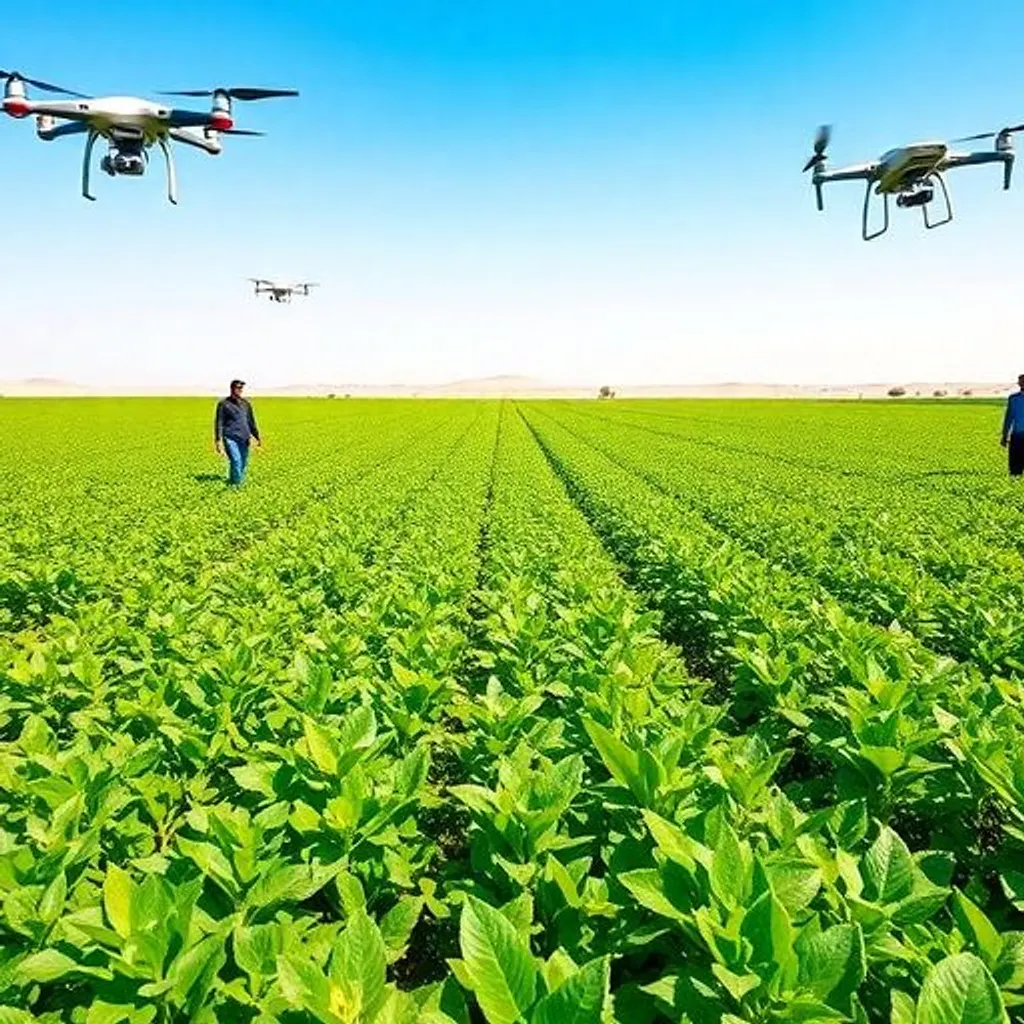In the ever-evolving landscape of agriculture, technology is playing an increasingly pivotal role in enhancing crop management and sustainability. A recent study published in the *IEEE Journal of Selected Topics in Applied Earth Observations and Remote Sensing* introduces a groundbreaking approach to crop health assessment, leveraging the power of remote sensing (RS) imagery and deep learning. This innovative method promises to revolutionize smart agriculture by providing farmers with precise, data-driven insights into crop health.
The research, led by Amani K. Samha from the Department of Management Information Systems at King Saud University in Riyadh, Saudi Arabia, proposes a robust framework called RCHA-IFNNRSI (Robust Crop Health Assessment using Improved Fusion Neural Network with Remote Sensing Imagery). This approach integrates advanced image preprocessing techniques with cutting-edge deep learning models to analyze crop health more accurately than ever before.
The RCHA-IFNNRSI technique begins with a bilateral filter-based noise elimination and contrast enhancement to improve the quality of raw images. This preprocessing step is crucial for ensuring that the subsequent analysis is based on clear and accurate data. The researchers then employ a fusion of the Swin Transformer (ST) and ResNet50 models to extract features from the images. This fusion allows the model to capture both local and global features, providing a comprehensive understanding of crop health.
One of the most innovative aspects of this research is the use of an attentive convolutional recurrent neural network (CRNN) for detecting and classifying crops into various health status classes. This technique enables automatic and highly accurate assessment of crop health, which can be a game-changer for farmers. “Early recognition of crop health issues allows for targeted interventions, decreasing crop damage and diminishing the requirement for chemical inputs,” explains Samha. This not only improves yield but also promotes environmental sustainability.
The commercial implications of this research are substantial. By providing farmers with real-time, accurate data on crop health, the RCHA-IFNNRSI framework can significantly enhance decision-making processes. Farmers can optimize resource allocation, reduce costs, and increase productivity. Moreover, the noninvasive nature of remote sensing technology makes it a cost-effective solution that can be easily integrated into existing agricultural practices.
The study’s extensive experimentation on the MH-SoyaHealthVision dataset demonstrated the superior performance of the RCHA-IFNNRSI technique, achieving an impressive accuracy of 98.97%. This level of precision is a testament to the potential of deep learning and remote sensing imagery in transforming the agriculture sector.
As we look to the future, the integration of advanced technologies like deep learning and remote sensing into agriculture holds immense promise. The RCHA-IFNNRSI framework is just the beginning. Future developments in this field could include the integration of additional data sources, such as weather patterns and soil health indicators, to provide even more comprehensive insights. The potential for automation and predictive analytics could further streamline agricultural practices, making them more efficient and sustainable.
In conclusion, the research led by Amani K. Samha represents a significant step forward in the field of smart agriculture. By combining the power of deep learning with remote sensing imagery, the RCHA-IFNNRSI framework offers a robust solution for crop health assessment. This innovation has the potential to reshape the agriculture sector, making it more efficient, sustainable, and productive. As technology continues to advance, we can expect even greater strides in this exciting and rapidly evolving field.

